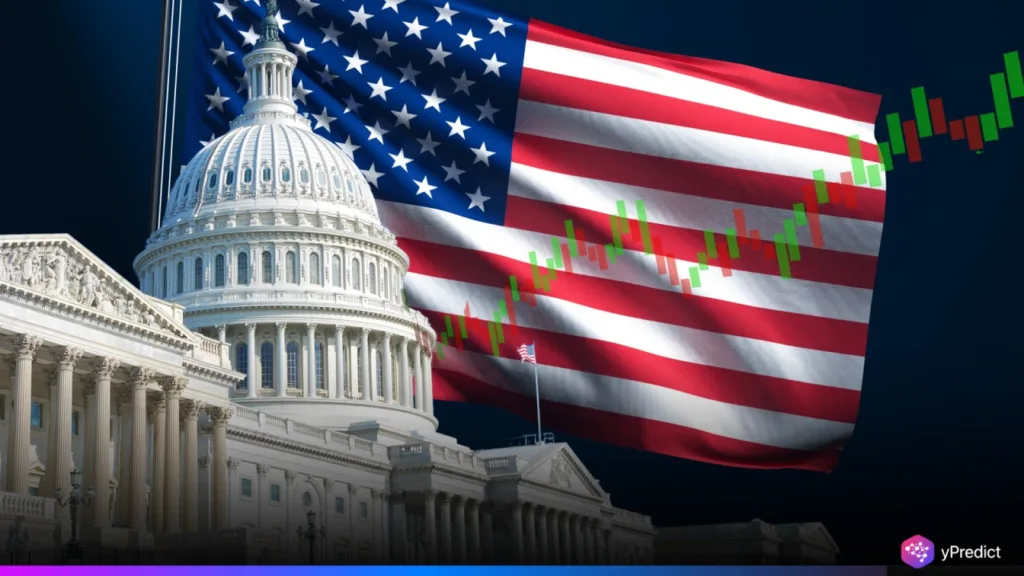
The U.S. Treasury’s announcement on August 19, 2025, that it will repurchase $4 billion in debt has resulted in additional speculation about whether it is using its authority to influence market liquidity. Repurchasing the debt is one of the largest buybacks since the program’s inception in 2000. The buyback occurs amid rising interest rates and new financial and foreign policy economic developments. Analysts consider the magnitude of the buyback as a risky undertone not done since the 2008 financial crisis. Accordingly, the relevant questions remain to speculate on the importance of the buyback on markets and the larger orientation of policy.
A Shift Beyond Traditional Quantitative Easing
The buyback highlights a rare instance of the U.S. Treasury taking measures often compared to Quantitative Easing, but without direct Federal Reserve involvement. The government completed a Liquidity Injection into financial markets by paying down outstanding bonds. This is an important distinction as it confirms the Treasury is prepared to act separately in terms of managing debt and providing stabilization. Historical data show there were similar attempts to raise liquidity between 2000 and 2002, but never before on such a scale. Given the Treasury’s recent actions are toward this level of magnitude, it indicates the importance of the current interest rate environment. Market participants are talking about the implications of this approach and assert that it disrupts the traditional view that only central banks have the authority to implement liquidity easing measures.
Liquidity Injection Raises Inflation Concerns
While the buyback improves cash management and restructures debt maturity, concerns over inflation remain in focus. Economists stress that a Liquidity Injection of this size could eventually fuel higher consumer prices if not carefully managed. Peer-reviewed studies on this direct approach remain limited, leaving analysts with more questions than answers. TreasuryDirect data indicate short-term benefits in liquidity and efficiency, yet the long-term inflationary consequences remain uncertain. This uncertainty is reminiscent of post-2008, when the measures of Quantitative Easing would create waves for years. Critics are now asking whether the Treasury is merely going back in history and doing the same thing under a different name, which may create inflationary overhang in an economy that can hardly withstand it.
Policy Independence or Hidden Coordination?
The U.S. Treasury’s move has also sparked speculation about its independence from the Federal Reserve. While officials stress that this buyback is distinct from central bank activity, the timing suggests some level of coordination may exist. The August 18, 2025, Fortune report on BLS revisions added another layer of skepticism, as public trust in government economic data remains fragile. The debate over transparency now extends beyond the Federal Reserve to the Treasury itself. If these buybacks are a genuine policy change, it could alter the structure of power in the management of the U.S. economy. However, if coordination is hidden, both institutions could further erode their credibility.
Market Reactions Signal Divided Outlook
Market reactions to the announcement have varied in response to the Fed’s possible buybacks of Treasuries. Bond yields fell sharply before retracing, which likely indicated a belief that there would be a stiff supply before the end of the month. Equities rose slowly, yet cautiously, again likely reflecting some investors. Some investors labeled the move as a needed intervention to reignite debt market confidence, providing time to gather more information about global supply, including the pace of deficits for developed economies.
Others patterned the buyback as a speculative leap differently than the Fed trade desks, and that it would accelerate inflation and central bank causation for the U.S. Treasury, potentially to renege. Analysts indicated that in the current macroeconomic environment, when interest rates are already stressing government financing due to the pace of deficits, the decision comes at a very consequential time. The buyback was merely a technical move, yet it was clearly political and economic. For the time being, the markets are already scrutinizing whether this is the start of a radical new path or a transient experiment.







